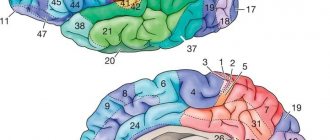Adviсe
- What is nirvana?
- Types of Nirvana
- How to fall into nirvana?
The concept of nirvana is found in many teachings and beliefs. It means freedom from torment. In common usage, nirvana is a state where there are no passions, torment , and there is the highest happiness and peace. This is an unknown feeling of constant peace and joy.
Nirvana acts as a break in the chain of reincarnation. This is a stop of reincarnation, constant and indestructible peace. Nirvana is difficult to define. As for its understanding, there are constant discussions among scholars of Buddhism. In the understanding of Hindus and followers of Brahmanism, nirvana is a union with Brahma.
How can one achieve nirvana in Buddhism and what does it mean?
According to the Buddha's belief, despite the torment that permeates every stage of existence in Samsara, there is a state without torment, and it is possible to achieve it. It is a state of trance or nirvana. Entering this state in the teachings of the Buddha is designated by the term amata, that is, the achievement of the soul, which destroys the chain of karmic existence.
What is nirvana? By definition, this is a state of soul, freedom from worldly worries and attachments, complete enlightenment and knowledge of the Truth.
The Sutra Pitaka defines nirvana as chitta (liberated mind), which does not experience any feelings. Oazum is no longer identified with the phenomenon of life, it is constant, eternal, and therefore liberated. Nirvana is the end of ignorance (avidya), which plunges the mind into a constant chain of reincarnation, samsara (a life of dependence). In its precise designation, nirvana is not considered a precise place or state. She acts as the knowledge of Truth.
Concept in Buddhism
Nirvana is an ambiguous term, but at the same time key in Buddhist philosophy. This is what every Buddhist strives for, whether he is a layman or a monk, this is the main goal, the destination on the Buddha's path.
Even the Great Teacher himself did not give a clear definition of this concept. He said that in nirvana there is no mental flow, no worries, no fears. Each current of Buddhist thought brings its own grain of knowledge to the understanding of nirvana, and often interprets it completely differently.
First, let's look at the etymology of the word, which has Sanskrit roots:
- “nir” literally means the particle “not”, negation;
- “vana” – transition, flowing from life to life.
By combining the two components of one word, you can decipher the meaning: denial of the transition from one life to another. This means the end of a series of rebirths, the extinction of the flame of reincarnation, a stop in the rotation of the wheel of samsara.
The reason for this is the cessation of suffering caused by passions, desires, fears, and attachments.
In Pali, "nirvana" sounds like "nibbana".
There are several definitions of how such a state is defined by Buddhist teaching:
- liberation from desires, attachments, and therefore suffering;
- ending the series of rebirths;
- the state of consciousness when it finds absolute peace;
- a major goal in early Buddhism and among Theravada Buddhists.
Buddhologists do not stop arguing about which definition is considered correct. But they agree on one thing - in the state of nirvana, the emotional aspect and sensations are discarded, and the mind finds peace.
Buddha bequeathed that one can get rid of suffering - and then the cause-and-effect laws of existence will collapse, the karmic connection will cease to exist.
The theme of nirvana is undoubtedly touched upon in the scriptures. Thus, the Pali Canon contains the Mahaparinibatta Sutta, which means “the sutra on the great transition to the state of nibbana.” Here she is called nothing less than “blessed”, “devoid of attachments”, “free”.
The Sutta Pitaka speaks of a mind that has managed to free itself, cleanse itself of attachments. Nirvana is a kind of liberation from one’s own ego, because all thoughts, sensations, and passions of the individual are rejected.
When the ties connecting with the material world, the desire for money, power, wealth, dependence on other people, the opinions of others, and status in society weaken, then the possibility of achieving enlightenment becomes closer and closer. But there is still a long way to go before that.
Meditation changes the brain
So far, meditation has been poorly studied, although it has received recent interest from the scientific community. The main problem of research until recently was that scientists themselves did not understand the types, techniques and tasks of meditation at all, did not take into account the professionalism of practitioners and how many years of their lives they spent on it: five or forty-five. Daniel Goleman and Richard Davidson collected the entire body of research on meditation in their book Altered Traits, exposing much as flawed and reporting rare convincing experiments, including their own studies of the brains of experienced monks.
The most interesting studies show that during the meditation of an experienced practitioner (for example, Mingyuru Rinpoche was counted 62,000 hours in his life), high activity flashes on the EEG graph; functional MRI demonstrates an increase in the activity of some areas of the brain up to 800%; and high-resolution MRI scanners show that the brain of a 40-year-old monk has the gray matter volume of a 33-year-old.
What is surprising, however, is not that brain activity changes during the process of meditation—it is that experienced meditators show dramatically different gamma brain wave activity from control groups of non-meditators and outside the meditative state. There are four main types of EEG waves. Slow delta waves occur primarily during deep sleep. Theta waves, a little faster, occur when we are nodding off. Alpha waves are when we hardly think and are relaxed. Beta waves, fast waves, reflect active thinking or concentration.
Gamma waves are the fastest of all and occur when different areas of the brain are activated at the same time. This happens in moments of insight, when various elements come together into a single picture.
A gamma-ray burst occurs when you solve a puzzle, a riddle, or suddenly come up with a table of periodic elements. The same flash of gamma activity occurs in Marcel Proust when he tastes a cookie that reminds him of his childhood, and from all corners of his associative memory he is bombarded with memories of the smell of the house, the color of his lover’s hair and the feeling of the wind on his cheeks that so excited him in his childhood. those years.
The amplitude of gamma waves in the brains of yogis was 25 times higher even in a calm state compared to ordinary people. This does not explain much, but it shows a neurophysiological correspondence to the state that practitioners describe: open awareness of all phenomena of the external and internal world at the same time, without attachment and rejection, effortless, relaxed and alert at the same time. It was discovered that this state of the brain could be observed even during the sleep of practitioners, although, in general, the presence of gamma oscillations during deep sleep is unprecedented from the point of view of the ordinary brain.
In addition, experienced meditators demonstrated an unprecedented ability to “switch” their brain activity at the command of experimenters and showed differences in activity and connections in the “default system” responsible for our fixation on thoughts about ourselves.
That the effects of meditation last through rest, daily activity, and even sleep suggests that it can truly transform the human brain—a property that Davidson's team called "trait-altered" after accumulating a certain number of hours of practice. its effects stay with us forever, changing our brains, personality and lifestyle.
One can only imagine what it would be like to live in a constant state of insight and the connectedness of all the elements of the world with each other, without uttering to oneself a bunch of unnecessary worries about oneself. Or you can try meditating.
Stages of achievement
How can one achieve nirvana? No one has yet been able to answer this question unequivocally.
One opinion says that to know the nature of enlightenment it is enough to become an arhat, i.e. find personal awakening.
Others believe that bodhisattvas - beings who themselves have achieved awakening, but who abandoned nirvana in the name of love and help to everything in the world - can help on a difficult path.
Still others are confident that even lay people can achieve complete liberation if they follow all the rules prescribed by tradition, engage in meditative practices, read mantras, lead a correct lifestyle, and are pure in thoughts and intentions.
There are several stages to achieving nirvana:
- Sotapanna - loss of excessive attacks of excitement, anger, weakening of dependence on material wealth, power motives, public opinion, cessation of worries about the transitory.
- Refusal of primitive level aspirations, likes and dislikes, sexual interest.
- Lack of fear of unpleasant sensations, humiliation, reproach, pain. Pleasure and anger are replaced by imperturbable calm.
If we talk about ways to achieve nirvana, then one of three paths leads to it:
- Samma-Sambuddha - following the path of the preacher, teacher: the generation within oneself of paramitas - the perfect qualities of a bodhisattva;
- Pratyeka Buddha - the wordless Buddha: the path to enlightenment without the ability to teach others the dharma;
- Arhata-Buddha - following the instructions of the bodhisattva, which carries the dharma.
The main thing that needs to be done at the initial stage along the path of Buddha is to give up material desires. But here’s a paradox: the desire for nirvana is in itself one of the desires that the Buddha’s teaching recommends that we give up.
This means that the path to liberation will be thorny and require significant effort. After all, on the one hand, motivation is necessary to achieve any goal, but on the other hand, it turns out that nirvana in itself should not be a goal.
How can a non-Buddhist achieve nirvana?
It is clear that only Buddhists who have gone through the difficult path of enlightenment can achieve that Buddhist nirvana. But most people just want to be happy. True, rarely does anyone succeed in grabbing a bluebird by the tail. There are at least two explanations for this:
- We dream of happiness, but we don’t know how to be happy. At school and university, we are taught smart things, but they are not told the main thing: how to control our emotions, resist excessive depression, monitor stress levels, defend personal boundaries, and make independent decisions. But all this is the basis of mental health and happiness.
- We strive for happiness, but are afraid to give up suffering. This may sound surprising, but suffering has its advantages and benefits. They help to attract attention, give cause for pity, excite the blood, tickle the nerves. By realizing all the bonuses that suffering brings into life, you can begin to change.
Becoming happy is not easy, it takes time. And the first thing you can do is slow down, take time for yourself and sort out your emotions: when and where they come from, what they are called, what they want to tell us. Such self-analysis is not carried out in one day; it may require work with a psychologist. But it will help you discover the main source of suffering and stop feeling sorry for yourself. And this is already half the battle.
What to do next?
- Don't set yourself sky-high standards of happiness. It has been observed that the tone of motivational advice from books and videos leads to even greater disappointment. It, in turn, strengthens the inferiority complex and interferes with the feeling of happiness that one wants to achieve. The circle closes.
- Gradually develop the skill of “being happy.” It is impossible to jump from unhappiness to happiness in one leap - it is simply unrealistic to rebuild your usual model of the world in one day. A positive perception of the world needs to be developed in oneself day after day. In other words, re-educate yourself. And this is painstaking but pleasant work.
- Communicate more, but do it usefully. Sometimes we communicate with others “just because.” But just spending time like that means killing him. Even if you want to relax outside of work, communication should have a purpose. A board game, a fun garage sale, a hometown tour, cooking together, dance lessons - all this will help you relax, have fun and make pleasant memories.
- Don't waste time trying to fill time to avoid loneliness. It's much easier to enjoy moments when everyone is left alone. Time alone with yourself is an opportunity to get to know yourself, master meditation, and reflect on your mood and goals.
- Practice effective altruism. The practice is based on a simple idea: to do as much good as possible. It does not require continuous self-sacrifice or material costs. It encourages you to take into account not only your own interests, but the interests of loved ones and the needs of strangers. It’s obvious that by helping others, we help ourselves.
conclusions:
- Nirvana in Buddhism is the emptiness of consciousness, free from delusion and suffering.
- Nirvana is the path. Whether a person passes it or not depends only on him.
- Happiness requires regular work, like the skill of an artist or the training of an athlete.
Take the test: introvert or extrovert?
What is the difference between nirvana in the Hindu religion
If Buddhism says that after nirvana there is emptiness where there is no soul, then in Hinduism this state is understood somewhat differently.
As in Buddhist ideas, Hindus believe that nirvana entails a break in the series of reincarnations, the cessation of karmic consequences, the end of one’s own ego - this phenomenon is called “moksha”. But for Hindus, nirvana is reunion with Brahman, the supreme Lord.
This is mentioned in the scriptures Mahabharata and Bhagavad Gita, where an interesting word “Brahmanirvana” is used. Returning to God, feeling unity with him is the greatest happiness, because, according to Hinduism, a piece of the Almighty lives in each of us.










